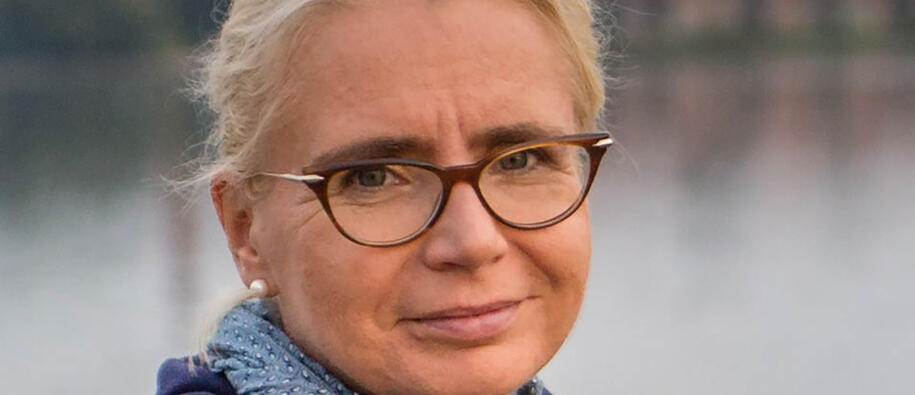Ways to measure this precipitation have been work-in-progress spanning decades, even centuries. This shower of sulphur dioxide (SO2), nitrogen oxides (NOX) and other chemicals affects everything from car roofs to foetal development — from the perceptible to the less obvious. Humans and animals can suffer health issues and be fatally impacted. Damaging chemicals can choke crops, estuaries and ecosystems. Even cultural heritage sites, such as Edvard Munch paintings in Norway, have been damaged and face even further erosion from climatic stressors caused by atmospheric deposition.
In Poland, assessment methods “are more than 20 years old and in need of modernisation,” says Barbara Toczko, Deputy Director of the Department of Environmental Monitoring at Poland’s Chief Inspectorate of Environmental Protection (CIEP). As project leader, she talks about the drive and goals of ‘Strengthening of Atmospheric Deposition Assessment in Poland Based on the Norwegian Experience’. A coherent system for tracking atmospheric gases and particles can lead to robust solutions for slowing down, even halting or reversing, their impact. With funding from the EEA and Norway Grants, CIEP, in cooperation with the Norwegian Institute for Air Research (NILU), is evaluating and creating ways to strengthen and innovate the assessment methods to safeguard the world’s ecosystems and push back against climate change.
Why are air and water pollution a vital issue globally and in Poland specifically? And why is it being addressed now?
The chemical composition of precipitation in Poland and worldwide is one of the essential elements affecting ecosystems. Thanks to monitoring, we obtain load information on acidifying compounds, biogenic compounds and heavy metals deposited from the air on forest areas, soils and surface waters. This information is vital for water, agricultural and forest management.
The current atmospheric deposition measurement and assessment system of the Chief Inspectorate of Environmental Protection (CIEP) is more than 20 years old. It needs modernisation. Taking into account the variety of needs on the national and international levels and the spectrum of activities carried out by the monitoring chemical composition of precipitation, we want to create a coherent system to monitor precipitation chemistry through the project entitled “Strengthening of Atmospheric Deposition Assessment in Poland Based on the Norwegian Experience”.
What exactly are atmospheric depositions, and how do you assess them?
Atmospheric deposition refers to the movement and deposition of atmospheric pollutants to the ground. Atmospheric deposition can be divided into wet deposition (pollutants are introduced with precipitation to the ground), dry deposition and total deposition (it is the sum of dry and wet deposition).
Why is it important to measure and track atmospheric deposition and emissions? How does it help in the big ‘climate change’ picture?
Harmful substances that can penetrate the ground with precipitation can influence climate change, for example, by destroying ecosystems. Due to the emission of various substances into the atmosphere, a constant change in air composition can be observed. The monitoring of atmospheric deposition chemical composition of atmospheric deposition may lead to the assessment of how effective climate policies are in reducing pollutant emissions by, for example, identifying potential maximum levels of pollutant deposition in the environment that will not cause adverse changes in terrestrial ecosystems (forest and non-forest).
This project seems to be a mix of research/innovation, engineering, and big data analysis. How do these different specialities interact?
The project was planned to comprehensively implement changes in the monitoring system of atmospheric deposition in Poland. The project started with concept development for modernisation and optimisation of deposition measurements in Poland, i.e., scientific work requiring big data analysis.
The next stage is to tackle innovation and implementation tasks like developing a launch concept, a quality assurance/quality control (QA/QC) system to measure deposition, and the system guidelines for data analysis from the new system. Plus, measuring equipment needs to be installed.
The project will be completed by the development and implementation of a new way of visualising and sharing deposition data via the CIEP ‘Air Quality’ website (to be launched in 2023) — a task requiring both innovation and creativity. Even though they need different skills and knowledge, these activities complement each other. Only such a comprehensive approach can ensure coherence in the new system.
How can the results of this project help adapt to climate change?
The creation of a new system for measuring and modelling deposition in Poland will provide data to monitor changes in deposition of substances throughout Poland in accordance with the best practices, track the impact of climate change in relation to precipitation chemistry and prepare information on deposits of substances in the air relevant for water, agricultural and forest management, to name a few.
The project will also increase knowledge on harmful substances that penetrate the ground with precipitation and may affect climate change and impact ecosystems.
These data are important for the needs of environmental management in Poland, through changes in water management, changes in air protection management, as well as in the broader context of shaping European policies.
What is the role of the Norwegian Institute for Air Research in this project? What has been done so far together with the partner?
Cooperation with the Norwegian Institute for Air Research (NILU) has a key role in the implementation of the project, as experts from NILU have the greatest experience in studying atmospheric deposition in Europe gained during many years of implementation of the tasks of the Convention on Long-range Transboundary Air Pollution, including the coordination of tasks related to EMEP strategy.
NILU experts offer their experience in the field of measurements of atmospheric deposition and support the Chief Inspectorate of Environmental Protection by analysing documents concerning the concept of modernisation and optimisation of deposition measurements in Poland (methodology, number and location of measurement points, scope of measurements), the concept of launching the QA/QC system for deposition measurements and guidelines for performing deposition assessments.
The Norwegian partner had a key role in developing the main assumptions for the ‘Concept of Modernisation and Optimisation of Deposition Measurements in Poland’. NILU has prepared a report on monitoring precipitation chemistry in Norway.
------------
Iceland, Liechtenstein and Norway cooperate with Poland on several projects under the EEA and Norway Grants to reduce CO emissions and improve energy efficiency, further the research cooperation and strengthen the cooperation with Norwegian enterprises in business and innovation.
The project “Strengthening of Atmospheric Deposition Assessment in Poland Based on the Norwegian Experience” will increase knowledge about pollutants that can harm climate change and ecosystems and specifically contribute to establishing a revised and modernised measurement and assessment system in Poland of atmospheric depositions and emissions. Norwegian partner (NILU) will contribute to experience-sharing and training-related activities.
___
Read more about the EEA and Norway Grants funding for a greener Europe


